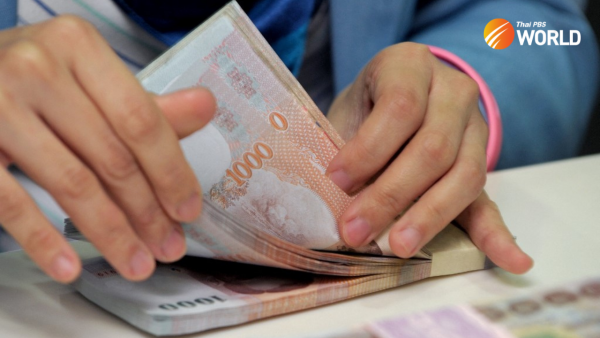Thai business loves carbon credits, but are they harming the climate and grassroots people?

While carbon credits are hailed in some quarters as a solution for the climate crisis, environmentalists warn they could send the planet spiralling into an even worse disaster.
The carbon credit system is a method by which businesses and organizations can buy credits for carbon-reducing projects (such as reforestation) to offset their greenhouse gas emissions.
But Witoon Lienchamroon, director of the environmental watchdog Biothai Foundation, cautions that unless regulations are in place to ensure carbon credits are properly audited, they become yet another method of greenwashing.
Greenwashing is a marketing spin that conveys a false impression that a company’s products are environmentally sound. Climate polluters use it so that they can continue to emit greenhouse gases while protecting themselves against accusations of harming the climate.
Witoon explained that the carbon credit system was developed as motivation for corporations or organizations to implement measures aimed at reducing emissions.
These steps can range from technological changes to reforestation and investment in clean energy.
However, the system in its current form is damaging instead of repairing the climate, according to Witoon.
“Though the carbon credit system can incentivize businesses to reduce their emissions and accelerate climate actions, the current system is seriously flawed on so many levels, meaning it does more harm than good in the battle against climate change,” he said.
Many of Thailand’s largest corporations are known to have invested in carbon credit schemes.
However, Nestlé and EasyJet were among several multinational companies that abandoned carbon credits earlier this year after a Guardian investigation published in January claimed that 94% of the rainforest carbon offsets certified by Verra’s Verified Standard Carbon program were “worthless”.
In addition, a “total of 39 of the top 50 emission offset projects, or 78% of them, were categorised as likely junk or worthless due to one or more fundamental failing that undermines its promised emission cuts”, said the Guardian, which conducted the investigation in partnership with Corporate Accountability, a non-profit, transnational corporate watchdog.
Biggest carbon credit schemes in Thailand
The biggest sources of carbon credits in Thailand are the forestry and agriculture sectors. However, many of these carbon credit projects are of dubious environmental value, Witoon said. As such, promoting them could lead to more, rather than less, damage to the environment and habitat of people all over Thailand.
The Thai government is heavily promoting the carbon credit system and aims to reforest up to 640,000 rai of land by the end of the year. That target is part of its plan to reforest 16 million rai by 2050 in line with the country’s deadline for carbon neutrality.
While on the surface, this ambitious goal looks good in the global fight against climate change, in reality, it will lead to severe problems, he said. This is because the business sector and authorities are focused solely on maximizing carbon credits while failing to ensure they actually offset emissions and benefit the environment.
The main problem with the rapid promotion of carbon credits in the forestry sector is that businesses and authorities only focus on areas earmarked for reforestation to reach the set target. This results in more and more communities being evicted to make way for reforestation projects.
“These new forests are likely to be monocultures that have plenty of capacity to absorb carbon but have relatively little biodiversity and are of far lower ecological value than a healthy forest ecosystem. This is bad for both nature and the people who depend on the forest ecosystem to survive,” he said.
“This is the wrong way to fight climate change. The [carbon credit] system has been engineered to solely benefit the business sector.”
Not only are local people’s rights and ecosystems being ignored as the state and private sector continue planting carbon-sink forests, but these forests are usually neglected once these “CSR activities” have been completed. This leaves them at risk of wilting and dying so that they fail to absorb the carbon that was supposed to offset emissions.
Principled use of credits
Sarinee Achavanuntakul, head of research at Fair Finance, has a more positive view of carbon credits. The system is meant to be a temporary measure to aid decarbonization campaigns as the world moves to reduce the emission of greenhouse gases, she said.
Problems arise, however, when the private sector and authorities focus on carbon credits as the only way to fight climate change.
“Though there are many flaws, I think carbon credits can provide many benefits to climate actions. For instance, they can help areas of industry that find it difficult to avoid emissions to reduce their carbon footprints. Meanwhile, reforestation in general is also very good for the environment and our climate,” Sarinee said.
However, she acknowledged that carbon credits were not the solution to the climate crisis.
“Carbon credits are not a license to continue emitting greenhouse gases. They are also not a cure-all that will singlehandedly tackle climate change. They are just a temporary measure that can help us in the transition period from a carbon-rich to a carbon-neutral society,” she said.
“It is also not a license to take advantage of local residents, as carbon credit projects often lead to violation of community rights while depriving locals of their land and resources.”
She said the carbon credit system could be improved by adhering to the following four principles:
- Carbon-credit forestry projects must be newly planted, not existing forestland.
- A system must be put in place to ensure the sustainability of projects so that forests or climate innovations will absorb carbon over the long term.
- Projects should not cause problems elsewhere. For instance, reforestation in one area should not lead to deforestation elsewhere.
- A system must be launched to ensure benefits are shared fairly between the private sector, authorities and communities so that local people’s rights are protected for the entirety of the carbon credit projects.
“There is no one-size-fits-all measure when it comes to carbon credit projects. But these principles should be applied to all programs to ensure that every stakeholder benefits,” Sarinee said.
By Thai PBS World’s General Desk






